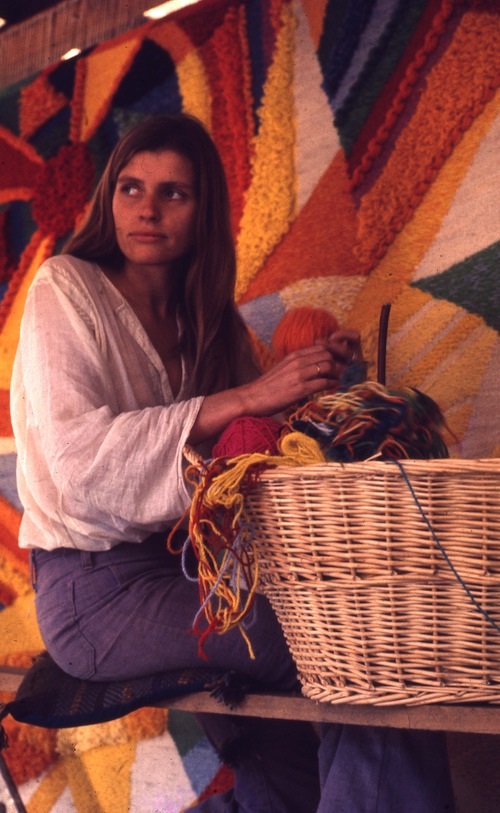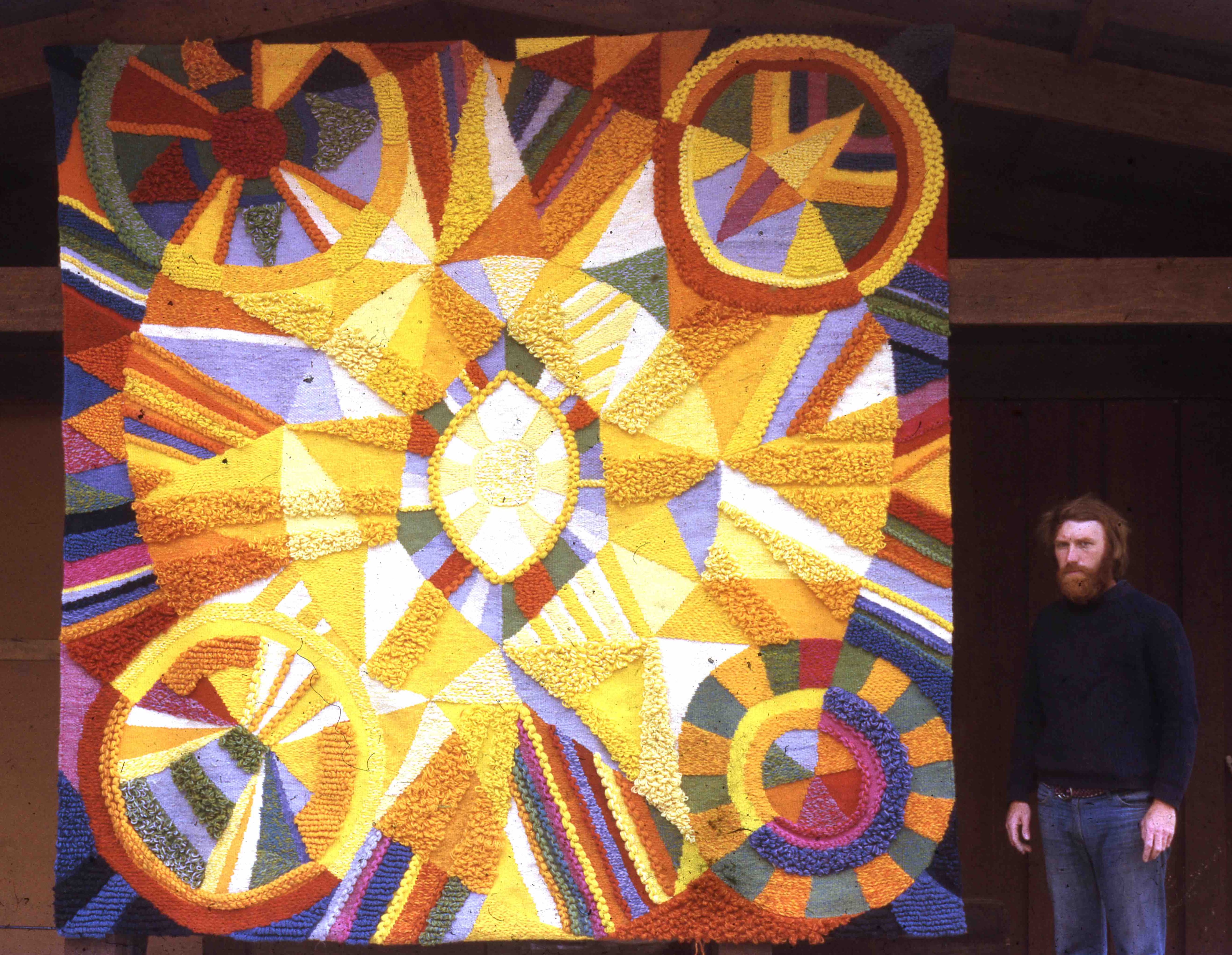When Diana Wood Conroy unrolled the tapestry that had been lost for nearly twenty years, she couldn’t help herself. She wept.
“I thought, my 29-year-old self, what energy I had to make a tapestry of that scale,” Diana said.
The upcoming exhibition at the Wollongong Art Gallery, , will be held in Gallery 1 from 8 June to 1 September 2024. The crowning glory of this exhibition is a tapestry called The Glory of the Lord [1973]. The story of how it was made, lost, and then rediscovered, is one worth telling.
Woven in 1973, The Glory of the Lord is a massive piece of work, spanning 2.7m by 2.7m. It was originally created for the Dining Hall of the newly constructed (at the time) Menzies College at Macquarie University, Sydney. The tapestry was so big Diana used the support beams of her house as a loom. It took six months to make.

Image: Diana making ‘The Glory of the Lord’. Photograph by Jennifer Steele.
“We were all about technology and the building of industries in the ’60s and ’70s but at the same time there was a movement to generate the mark of the hand. People were looking at First Nations art across Africa and South America and indeed in Australia. And so, we [architects] wanted something that was warm and tactile,” Diana said.
“I was always a lover of textiles since an early age. I fell in love with them… the brilliant colours the wonderful, perky narratives. In 1973 the architect Noel Bell and Ridley Smith built a new college at the Macquarie University, and they wanted a vibrant tapestry.”
The commissioned tapestry hung at the Macquarie University until about 2005 when woven arts started to lose their popularity.
“… they needed the space for digital technology. Screens and sound, much more important than tapestries. So, it was lost,” Diana said.
Diana never knew where her tapestry had ended up. But her husband, Paul Sharrad, was determined to not give up on solving the mystery.
At first it seemed that there was no record of the tapestry. According to the university, it was not in their collection. Then in 2023, Diana and Paul were put in touch with someone who knew a little more.
“We went to see the Master of the College who consulted the retired Chief Maintenance Officer who remembered, ‘oh yes, that tapestry. We rolled it up we put it in that funny old storeroom behind the kitchen’. And there it was,” Diana said.
It’s with great pride that the lost tapestry and many of Diana’s other works will be shown at the Wollongong Art Gallery. The upcoming exhibition, An Archaeology of Woven Tapestry, is a testament to Diana Wood Conroy’s 60-year career as an artist.

Image: Diana Wood Conroy, The Glory of the Lord, 1973, Woven tapestry, wool on linen warp, 2.7m x 2.7m, Collection Menzies College, Macquarie University.
Out-going Wollongong Art Gallery Director, John Monteleone said that as social media encourages young people to re-engage with textile arts, tapestries like Diana’s are making a resurgence.
“Ironically, we’ve come around again and we’re seeing a greater interest from young people in woven arts, tapestries, and textiles. Social media seems to be rekindling the passion for slowing down and engaging with art that was once deemed old fashioned,” Mr Monteleone said.
“I think that Diana’s work is a true exploration of time. Not just thanks to the labour-intensive nature of physically weaving a tapestry, but through her experience as an archaeologist and engagement with different cultural art making practices.
“My hope is that this exhibition will interest a whole range of different people, young and old. I encourage everyone to come and visit the Art Gallery, slow down and take the time to appreciate Diana’s incredible body of work.”
Exhibition details
8 June – 1 September 2024
Gallery 1
brings together woven tapestries, drawings and paintings drawn from public and private collections from 60 years of Diana Wood Conroy’s life as an artist. Travelling widely in Europe, she is now deeply embedded in the country of the Illawarra.
Combining a passion for the earth, threads and colours of the Australian land in grids of pattern, her loving study of ancient archaeology in Cyprus and Greece informs her imagery. The past is a dark mirror to the present, foretelling our society’s fragmentation, but the tactile and imaginative process of weaving offers clues for survival.
Free. No need to book.








